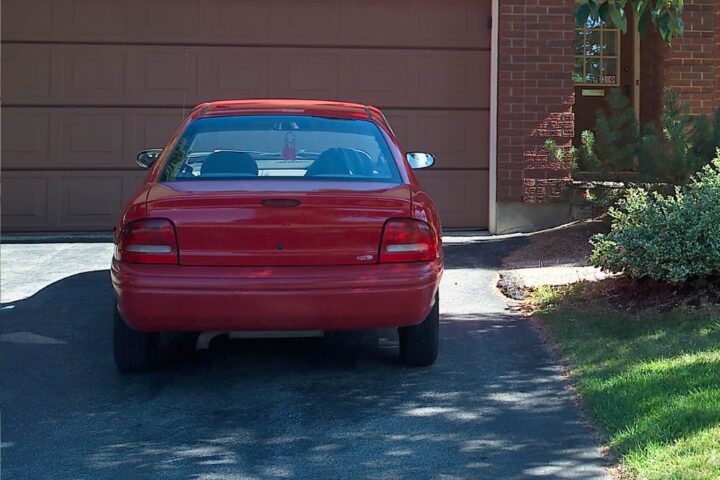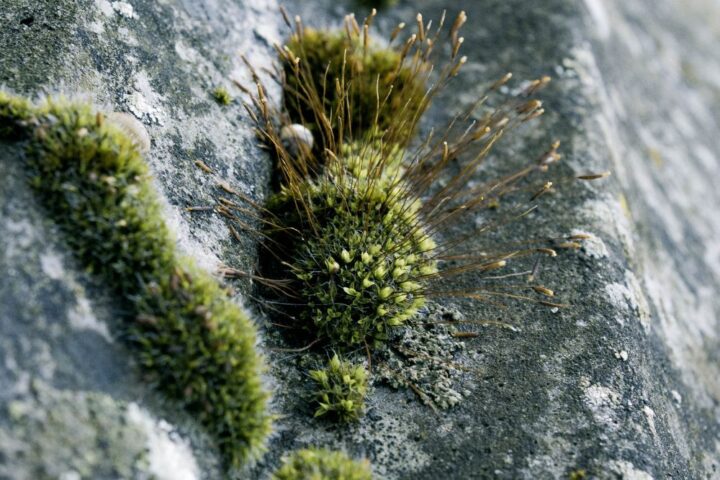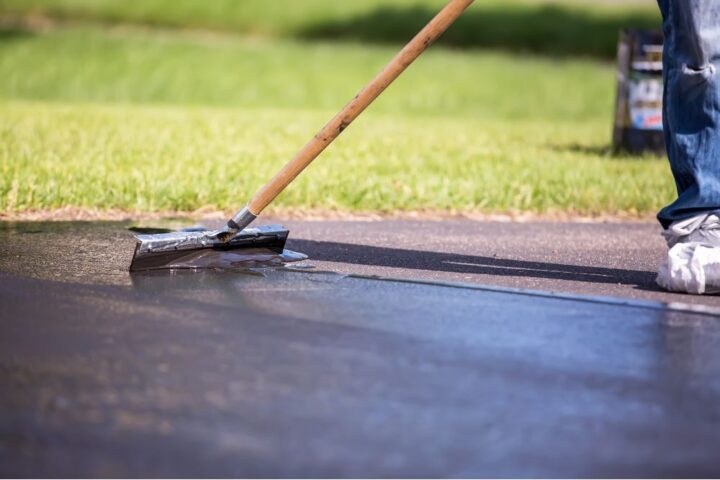If your exposed aggregate driveway is not looking as fresh as it once did, there are a number of things you can do to rejuvenate it.
In this article, we will cover a range of techniques you can use to bring your exposed aggregate driveway back to life, including cleaning, sealing, stain removal and more.
Tip 1: Regular Cleaning
Dirt and debris have a tendency to accumulate on your driveway’s surface. This not only tarnishes its look, but can also result in stains.
A simple regimen of sweeping or using a leaf blower can significantly contribute to maintaining your driveway’s pristine appearance and preventing stains. Don’t fret, you don’t require any potent chemicals for this chore. A gentle detergent and water will suffice, eliminating surface dirt without harming the concrete.
Tip 2: Sealing
Picking the correct sealer for your exposed aggregate driveway is vital, and it should be specially designed for aggregate concrete surfaces to guarantee maximum safeguarding. This isn’t a choice to make lightly as it can greatly impact the lifespan and visual appeal of your driveway.
When deciding on a sealer, search for one that offers UV resistance and abrasion protection to defend your driveway from weather conditions and daily usage. This won’t only protect against damage, but it’ll also improve the look of the exposed aggregate. High-quality sealers can impart a glossy finish that’ll make your driveway noticeable.
Consider a permeating sealer for deeper safeguarding. It’ll infiltrate the concrete surface, giving a more natural appearance while still providing excellent coverage. Furthermore, it’s crucial to choose a sealer that’s simple to apply and reapply when required. This will make sure that maintaining your driveway’s durability doesn’t become an overwhelming task.
Lastly, ensure the sealer you choose is compatible with the type of aggregate used in your driveway. That way, you’re assured to achieve the best results and your driveway will continue to look as good as new for many years.
Tip 3: Common Stains and Removal Techniques
On your exposed aggregate driveway, you’re likely to come across a variety of stains such as those from borehole water, rust, oil, grease, and tyre marks. However, there’s no need for concern; each type of stain has a corresponding removal method that can effectively tackle it.
Identifying the Stains
Let’s delve into identifying usual stains on your exposed aggregate driveway. Recognising these stains before learning effective removal methods is essential. Here are the most common driveway stains:
- Bore water stains: These create reddish-brown marks which can really ruin the look of your driveway.
- Oil and grease stains: These are typically very dark brown or black and won’t come off with simple water.
- Tyre marks: Black in appearance and resembling tyre tread, these might be difficult to get rid of, but spotting them early simplifies the task.
Effective Removal Techniques
Now, to remove these stains.
For oil and grease stains, utilise a high-pressure washer and a degreasing solution. Apply the degreaser and then rinse off with the high pressure washer. You may need to scrub and repeat a few times for older or stubborn oil stains.
For rust stains due to bore water use potent acid-based cleaners.
Tyre marks can be rubbed away with a degreaser. Look for one specifically made for tyre marks as these are more effective. Generic cleaners are typically not strong enough for this. As with oil stains, you may need to scrub and repeat.
Remember, swift action is crucial to prevent stains from settling in and becoming more difficult to remove.
Tip 4: Handling Concrete Cracks and Damage
Cracks and damage on your exposed aggregate driveway can be quite a bother. Whether you’re grappling with small or larger cracks, each situation has a specific method of resolution.
Identifying Concrete Cracks
When dealing with your exposed aggregate drive, it’s vital to swiftly spot and tackle concrete cracks before they develop into larger, more harmful crevices. Cracks can range in intensity, from hairline cracks that can be filled with a concrete patching compound, to larger crevices that may call for expert repair services.
Regular examination of your drive can help identify these issues early. Here are a few things to keep an eye on:
- Hairline cracks: These are small, but shouldn’t be overlooked.
- Larger Crevices: These demand immediate consideration.
- Signs of decay: This could suggest underlying problems.
Repairing Driveway Damage
To maintain your driveway in prime condition, you must evaluate the extent of any concrete cracks and act promptly. This could mean using a concrete patching compound to fill small gaps, or seeking professional help for larger, significant damage. Don’t underestimate small cracks; if left unattended, they can swiftly develop into larger issues.
If the cracks are minor, pick up a concrete patching compound from your local hardware shop and fill them. However, if the cracks are larger or more widespread, it might be time to bring in the professionals.
Always remember, it’s vital to preserve your driveway’s structural integrity and handling repairs promptly can prevent further degradation, sparing you from expensive replacements in the future.
Tip 5: Water Exposure and Damage Prevention
Water exposure can wreak havoc on your exposed aggregate driveway, leading to erosion, discolouration, and even potential cracking. To prevent this, you need to reduce the amount of water your driveway has to endure. A good starting point is to establish a proper drainage system. This helps guide water away from the driveway surface, effectively lowering the risk of damage.
Standing water can be a significant issue as well. It can weaken the concrete, leading to cracks. Make sure you don’t allow water to accumulate on your driveway’s surface.
Sealing is another essential preventative measure. If there are any cracks or gaps in your driveway, make sure they’re filled in. This halts water from getting beneath the surface and causing freeze-thaw damage.
Seeking Professional Help for Restoration
When your exposed aggregate driveway begins to exhibit signs of wear and tear, it’s time to contemplate engaging a professional Melbourne concreter. These specialists possess the appropriate skills and experience to manage all sorts of issues that might plague your driveway, from cracks and stains to weather damage and other surface problems.
Conclusion
So, you’ve got the rundown on how to look after your exposed aggregate driveway.
If you need advice or assistance regarding your driveway, be sure to speak to us today by calling 0403 292 005 or emailing luke@smoothconcrete.com.au.




